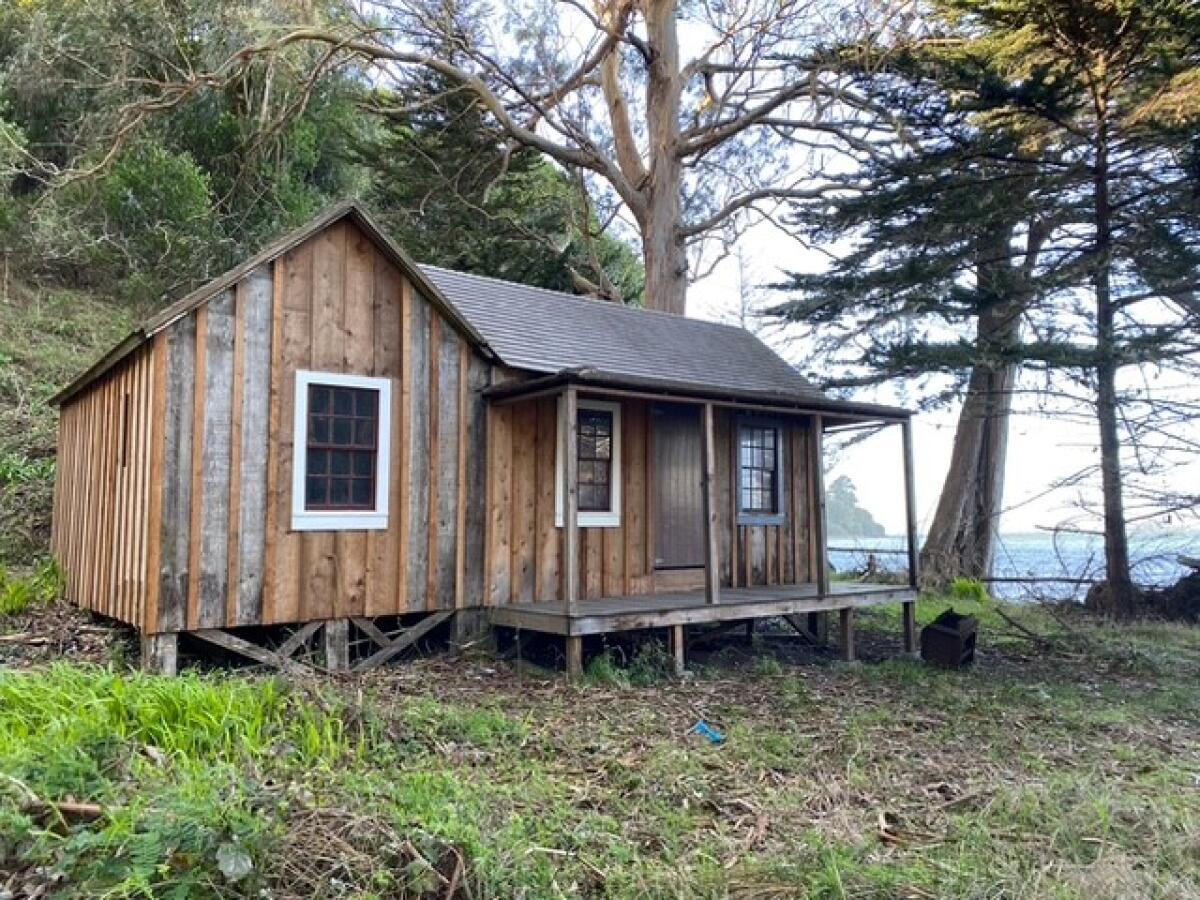How a national park can honor Coast Miwok ancestors and their living descendants

- Share via
In 1984, my California Indian History professor told our UC Berkeley class that the Coast Miwok, a California Indian people, were extinct. I raised my hand and said that my Coast Miwok mom was alive and well. The professor dropped his head and sighed.
His claim was in line with the standard thinking at the time. In the 1920s, around the time my mom, Elizabeth Campigli Harlan, was born, anthropologists had concluded there was nothing left of the culture in the living people, and therefore the Coast Miwok people of Northern California were extinct. I did not share with my mom that her people were considered extinct by the “experts.”
The conclusion was wrong in the 1920s, still wrong in the 1980s, and undeniably wrong today. The way to correct that false assertion is simple: First, raise awareness of my family’s millennia-long history here in Northern California, including with preservation of our 19th-century home. Second, honor the living Coast Miwok descendants by recognizing our family’s direct ancestral lineage to our home, in what is now Point Reyes National Seashore.
That lineage, predating the Egyptian pyramids, extends right up into the 20th century, when my mom and her siblings and cousins were growing up. Her large extended family lived all around Tamal-liwa (Tomales Bay) in Marin County, some 40 miles north of San Francisco. Their generation spoke English and Spanish, built and resided in wood-frame homes, harvested food in the ways of our ancestors, and labored in the local fishing, ranching and domestic workforces. My relatives identified as Tomales Bay Indians, a name similar to that of their ancestors, Tamalko, people of Tamal-liwa.
Many Coast Miwok descendants, like my family and me, remain residents of Northern California. We didn’t go far. Like our ancestors, we are connected to Tamal-liwa, in a way that cannot be severed.
All of which puts the National Park Service in an unusual position.
The Park Service controls the land where my family lived for generations, including the last remaining home built by Tamalko hands. The little wooden house on a cove on the western shores of Tomales Bay was built by my mother’s grandfather, Joe Felix, and his brother, Ben. Our family was evicted in the 1950s by ranchers, empowered by a legal system that was designed to deny ancestral Indigenous land rights. It’s been 66 years since my family left the house for the last time after years of court battle by our Uncle Victor Sousa.
Let’s be clear: Point Reyes National Seashore is Coast Miwok land, Indigenous land. And yet, approximately 28,000 acres of the Seashore are reserved for ranching, while only 1.5 acres are dedicated to Coast Miwok history — a site of ceremonial grounds called Kule Loklo, which is currently closed to the public and awaits restoration by the Park Service and the Federated Indians of Graton Rancheria, a federally recognized tribe that includes Coast Miwok people. Our ancestral home on the cove, a symbol of Indigenous Coast Miwok resiliency, also waits behind a locked gate, neglected and vandalized.
Every year most of the 2.5 million people who visit Point Reyes National Seashore come to see the elephant seals, birds, tule elk, panoramic coastlines and beaches. Should visitors stop to read a Park Service history panel, they would be led to believe that Coast Miwok people’s time on the peninsula began and ended with an encounter with Sir Francis Drake in 1579.
What is not conveyed is that Coast Miwok people have been here since before the geological formation of San Francisco Bay and continued to live on the peninsula through the 20th century. Each time our family drives through the park, we are confronted with signs for the “historic” ranches, while our ancestral home sits unmarked, a target for taggers. A 10,000-year Indigenous history has been supplanted by 160 years of Euro-American immigrant ranching history.
Correcting that is the first task, and an easy one. The Park Service should add wayside signage within Point Reyes conveying that the Coast Miwok people lived on this land for millennia, right up until they were evicted by ranchers and California courts in the 1950s.
The second task is to acknowledge and respect Coast Miwok people of today, including my family. We are not asking the federal government to hand over the land and the house. In fact, we believe that the Park Service can be an excellent partner in preservation, working with our family and the Federated Indians of Graton Rancheria.
In addition to restoring the Kule Loklo roundhouse and the little house on the cove, we ask that the Park Service ensure us access to our house by issuing a long-term special use permit like those given to ranchers within Point Reyes. Current visitors to Kule Loklo are invited to imagine Coast Miwok people going about their lives, but that plays into the “extinct” myth. Don’t just imagine; let Coast Miwok families and communities access their ancestral lands as returning family members.
The movement to tell the full story of first peoples is a project for all national parks, monuments and public lands. Point Reyes can be an example in honoring Coast Miwok ancestors and their living descendants. In the meantime, the Felix family is restoring Coast Miwok history through gatherings and sharing stories. We’re fighting to save our home and ancestral land so that future generations can walk in the footsteps of our Tamalko ancestors at Tamal-liwa.
Theresa Harlan is the founder and director of the Alliance for Felix Cove, dedicated to celebrating her Coast Miwok family’s life at Tomales Bay. You can hear her story at Emergence Magazine Podcast.
More to Read
A cure for the common opinion
Get thought-provoking perspectives with our weekly newsletter.
You may occasionally receive promotional content from the Los Angeles Times.









